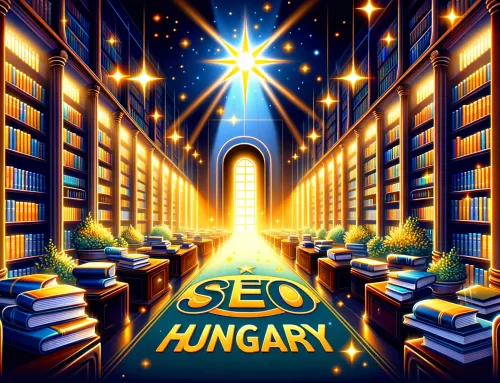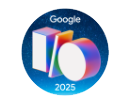The digital world is constantly evolving, and so are search engine optimization (SEO) trends and techniques. SEO has long been about more than just keywords and links; rather, it is a complex and dynamic field that confronts professionals with new challenges and opportunities. In the world of modern SEO, from basic on-page and off-page techniques to advanced artificial intelligence (AI) applications to user experience (UX) and sustainability, many factors play a role in the successful ranking of websites.
In this article, we will cover the various aspects of SEO in detail, from white hat and black hat SEO to semantic and structured data SEO, as well as the growing importance of voice and visual search. . We examine how the latest technology trends and changes in user behavior are shaping the SEO strategies and how to effectively integrate these innovations into website optimization.
Get ready to dive deeper into the SEO into its mysteries and discover how you can apply these advanced techniques to improve the ranking of your own website in the dynamically changing world of digital navigation.
Basic SEO Types
On-page SEO:
On-page SEO is an optimization process related to the content and structure of your website. This includes ensuring the quality of the content, the appropriate keywords use, set meta tags (such as title and description), header tags (H1, H2, etc.) and optimize the URL structure. This process helps search engines understand what the page is about and whether it is relevant to a particular search query.
Off-page SEO:
Off-page SEO is the set of activities that take place outside of your site and are aimed at increasing the reputation and authority of your website. This includes getting backlinks from other trusted sites, social media presence, branding, and guest blogging. These activities indirectly improve the ranking of your website by increasing the number and quality of links, which search engines evaluate as a kind of "vote" for the page's authority.
Technical SEO:
Technical SEO is the optimization of the background elements of your website to ensure that search engines can access, read and index your page content smoothly. This includes improving website speed, mobile-friendly design, use of structured data, website security (such as using SSL), and creating search engine-friendly URL structures. This part of SEO is often less visible to users, but essential to search engines.
Technical and Development SEO
Mobile SEO:
THE Mobile SEO for websites on mobile devices deals with optimizing its appearance and performance. Its goal is that the website loads quickly, is easy to navigate and displays correctly for different screen sizes and operating systems. This is done to improve user experience and help rank for mobile searches.
Accessibility SEO:
Accessibility SEO deals with making the website accessible to all users, including those with various disabilities. It includes optimization techniques such as compatibility with screen readers, using appropriate contrast ratios, and making navigation easy using a keyboard. This increases the site's availability and improves the experience of all users.
Edge SEO:
It deals with the use of technologies and services installed on edge servers in order to improve the SEO of websites. With the help of edge computing, content can be served faster and more efficiently from servers located closer to users, thus improving loading speed and reducing latency. For example, Cloudflare.
JavaScript SEO:
JavaScript SEO is used to optimize the indexing and interpretation of dynamic websites that use JavaScript to display their content by search engines. It is important because search engines can sometimes have difficulty reading and indexing content written in JavaScript.
React SEO:
React SEO deals with the optimization of websites made in the React framework. React is a popular JavaScript library for developing dynamic user interfaces, and it's important from an SEO perspective to ensure that your content renders correctly and is indexable for search engines.
Next JS SEO:
Next.js is a React-based framework that supports server-side rendering, which can improve the SEO performance of pages. Next.js SEO takes advantage of these advantages to optimize websites for search engines.
Headless SEO:
Headless SEO refers to the optimization of websites created with so-called "headless" content management systems (CMS). In these systems, the frontend (i.e. the user interface) and the backend (i.e. the data storage and processing part) are separated from each other, which opens up more opportunities for SEO-related developments.
Speed SEO:
Speed SEO deals with optimizing the loading speed of web pages, as it is directly affects user experience and search engine rankings too. This includes reducing page load times, compressing images and code, using a content delivery network (CDN), and making efficient use of browser cache.
Server-Side SEO:
Server-Side SEO means optimizing the server-side factors of the website, which has a direct impact on the interaction with search engines and the performance of the website. This includes improving server response time, setting appropriate HTTP status codes, managing redirects, and optimizing website architecture and database queries. These changes can help search engines read and index your website faster and more efficiently.
Content and Media SEO
Content SEO (Content SEO):
Content SEO deals with the optimization of the content elements of the website, which includes the quality and relevance of text, images and videos and the appropriate use of keywords. Its goal is to create valuable, informative and well-structured content that attracts and engages visitors and helps it rank better in search engines.
Semantic SEO (Semantic SEO):
Semantic SEO is based on taking into account not only keywords, but also the topic, context and user intent of the content. This approach helps search engines better understand and evaluate web page content, not only based on words, but also on their meaning and context.
Multimedia SEO (Multimedia SEO):
Multimedia SEO deals with the optimization of multimedia content on websites, such as images, videos and audio files. This includes using alt text for images, properly tagging and describing videos, and providing transcripts of audio files so that search engines can better index and rate them.
Landing page SEO (Landing page SEO):
Landing Page SEO aims to optimize pages that are specifically designed to maximize conversions (e.g. sales, registration). It's important to have a clear message, content that aligns with user intent, and an effective call to action (CTA) to convert visitors into customers or leads.
Blog SEO (Blog SEO):
THE Blog SEO deals with optimizing blog posts so that they rank better in search engines. This includes creating relevant and keyword-rich content, updating posts regularly, and strategically using internal and external links to build authority.
Image SEO (Image SEO):
Image SEO means optimizing website images for search engines. This includes using proper file names, optimizing the size and format of your images for fast loading, and adding alt text and image descriptions to make the content of your images clear to both search engines and visitors.
Video SEO (Video SEO):
Video SEO deals with the optimization of videos for search engines, which includes labeling, descriptions, quality thumbnails use of images and videos entering your structured data. It aims to improve the online visibility and ranking of videos in search engines, including YouTube and other video sharing platforms. Video SEO helps your content perform better in search results, increases shares and views, and contributes to increasing brand awareness.
Podcast SEO (Podcast SEO):
Podcast SEO is aimed at improving the ranking of podcasts in search engines. This includes optimizing podcast episode titles, descriptions, and tags with relevant keywords, as well as providing transcripts to help index your content. The goal is to make podcasts easier to find and reach potential listeners through search engines and podcast platforms such as Apple Podcasts or Spotify.
Local and International SEO
Local SEO (Local SEO):
THE Local SEO is used to improve the online visibility of small businesses and locations that serve their customers in a physical location or operate in specific geographic areas. This process includes Google My Business profile optimization, use of local search terms, local link building and presence on local media platforms. The goal is for the business to appear prominently on search engine pages during local searches.
International SEO (International SEO):
International SEO is aimed at optimizing websites operating in several countries or languages. This includes setting up your website geo-targeting, using hreflang tags to distinguish between language and regional variants, and creating content tailored to different countries. The goal is for the website to be relevant and rank well for searches in different countries and languages.
Multilingual SEO:
Multilingual SEO deals with optimizing websites for the different languages of users who may potentially visit them. This process not only involves translation, but also takes into account keyword research and the cultural relevance of the content to make it relevant and attractive to the target language audience.
Local Pack SEO (Local Pack SEO):
Local Pack SEO specifically focuses on search results called Google's local pack or "3-pack", which shows the three closest businesses to your search query with a map and additional information. This includes updating local listings with accurate and complete information, gathering positive reviews and SEO activities to increase local relevance. The goal is to help businesses appear better in this featured local listing when users search for products or services in their immediate area.
Platform-specific SEO
E-commerce SEO:
E-commerce SEO means optimizing the product pages and categories of online stores and commerce platforms so that they rank better in search engines and thus increase traffic and sales. This includes refining product descriptions, meta tags, and improving the user experience through intuitive navigation and fast page load times.
YouTube SEO:
YouTube SEO aims to increase visibility on the video sharing platform. Key elements include creating compelling titles, descriptions, choosing the right keywords, and using quality thumbnails to increase your video click-through rates and help grow your subscribers.
App Store SEO:
In order to stand out in app stores, App Store SEO deals with the optimization of app titles, descriptions and metadata. The goal of optimization is to make apps perform better in searches, thereby increasing their downloads and improving their user ratings.
Amazon SEO:
Amazon SEO focuses on improving the ranking of products on the Amazon marketplace. Sellers try to promote the visibility of their products during customer searches by carefully choosing product titles, descriptions, keywords and user reviews.
Etsy SEO:
Etsy SEO involves refining the way your unique and handcrafted products appear on the online marketplace. This includes the enrichment of product titles and descriptions with keywords, the appropriate use of categories and tags so that products stand out in customer searches.
Shopify SEO:
Shopify SEO aims to improve your visibility on the Shopify e-commerce platform. The owners of the online store optimize the product descriptions, images and other SEO elements in order for their online store to be in a better position in search engines and for potential customers to find it more easily.
Squarespace SEO:
Squarespace SEO is done by leveraging the SEO tools and settings available to users of the Squarespace website building platform. The goal is to design and optimize websites to achieve better search engine rankings while taking advantage of the design and functionality offered by the platform.
WordPress SEO:
WordPress SEO is one of the most popular content management systems Websites created in WordPress means search engine optimization. This process includes the use of plugins (such as Yoast SEO) to help refine content, tags, and metadata, and improve website structure and speed. The goal is for WordPress sites to achieve higher rankings in search engines and for content to reach the target audience organically.
Wix SEO:
Wix SEO refers to the optimization of websites created by users of the Wix website building platform. Through the user-friendly interface, Wix users can easily access SEO settings such as meta descriptions, tags, and URL structures to improve the visibility of their websites by search engines and make them more attractive to visitors.
Social Media and News SEO
Social media SEO:
Social media SEO includes strategies that improve visibility and interaction on social media platforms to indirectly support a website's search engine rankings. It includes creating engaging content that encourages sharing, using hashtags, and optimizing social profile SEO elements such as bios and post descriptions.
Yelp SEO:
Yelp SEO is about optimizing Yelp business profiles so that local businesses rank better in Yelp search results. This includes providing accurate and detailed business information, uploading quality photos, and encouraging positive ratings and reviews, all of which help increase the visibility and appeal of your business profile.
News SEO:
News SEO focuses on optimizing news portals and online news articles in such a way that they rank high in the news sections of search engines. This process involves freshness, relevance, originality, and judicious use of keywords, and comprehensive tagging and rapid indexing of articles are also important.
Google Discover SEO:
Google Discover SEO optimizes your appearance on Google Discover, which offers users a personalized news feed on Google's search engine. In doing so, the emphasis is placed on the relevance, quality and adaptation of the content to user interests, so that the content reaches as many interested users as possible.
Specialized SEO Types
Image SEO:
Image SEO aims to optimize visual content so that images appear in a prominent position in the image search results of search engines and load faster. This includes properly formatting the name and alt text of the image files, optimizing their size and format.
Video SEO:
Video SEO deals with the optimization of video content so that it appears better in the video search results of search engines and on video sharing platforms. Relevant titles, descriptions, tags and thumbnails are key.
Programmatic SEO:
Programmatic SEO is the use of automated software and algorithms to optimize a large number of pages on a website, allowing for the management and efficient publication of a large amount of variation in content.
Holiday SEO:
Holiday SEO focuses on seasonal events and holidays, highlighting related products and content to help websites rank better for searches during the holiday season.
Featured Snippet SEO:
Featured Snippet SEO focuses on creating content that is suitable for search engines to display as a "featured snippet" or "position zero" that directly answers users' questions.
Long-tail SEO:
Long-tail SEO uses more specific, longer and less competitive keywords to target a more targeted and engaged audience to increase conversions.
SaaS SEO:
SaaS (Software as a Service) SEO means optimizing the websites of companies offering cloud-based services to achieve better online visibility and customer acquisition.
Enterprise SEO:
Enterprise SEO includes complex SEO strategies for large companies and large websites aimed at increasing brand awareness, global visibility and internal content management.
Niche SEO:
Niche SEO specifically focuses on the specific needs of a particular industry or market niche in order to target and serve businesses in that area.
Voice SEO:
Voice-based SEO means optimizing for voice-activated searches so that your content appears better in searches performed by voice-based assistants such as Amazon Alexa or Google Assistant.
Voice Search SEO:
Voice Search SEO includes methods to optimize web pages for the growing number of voice-based search queries, taking into account natural speech patterns and question patterns.
Visual Search SEO:
Visual search SEO refers to optimizing for searches powered by image search technologies, where users can use images for search queries, and websites need to optimize their content and images to be relevant and perform well in this area.
Structured Data SEO:
Structured data SEO deals with formatting the content of web pages in such a way that search engines can interpret them more easily and display well-structured results. This allows websites to take better advantage of various search engine features, such as rich snippets or FAQ sections.
User Experience (UX) SEO:
UX SEO focuses on improving the user experience and usability of the website, which indirectly improves the ranking of the website in search engines. This includes optimizing website navigation, design and content for user satisfaction.
Mobile-First SEO:
Mobile-First SEO is a mobile focuses on a classy appearance on devices, considering that searches are increasingly done on mobile. This includes using responsive web design, creating mobile-friendly content, and improving mobile site speed.
Forum SEO:
Forum SEO deals with optimizing your presence in online forums and community discussions so that businesses and individuals can improve their online reputation and increase their visibility on these platforms.
Influencer SEO:
The Influencer SEO is influencer marketing and optimizes the use of content so that brands and products rank better in search engines thanks to influencer campaigns and their content elements.
Behavioral SEO:
Behavioral SEO focuses on analyzing user behavior and using it in SEO strategies to better understand user intent and needs, thus increasing website relevance and appeal.
EAT SEO:
EAT (Expertise, Authoritativeness, and Trustworthiness) SEO is based on the content of web pages radiating expertise, authority, and trustworthiness, which are important factors in Google's quality guidelines.
Omnichannel SEO:
Omnichannel SEO is digital marketing means integrated and coherent SEO strategies for all its channels, ensuring that brands and products convey a unified and consistent message across different platforms and devices.
Privacy SEO:
Privacy SEO focuses on user privacy and security in SEO strategies to ensure user trust is maintained and regulatory compliance is maintained while optimizing website rankings in search engines.
Search Engine Optimization Philosophies
White hat SEO:
White hat SEO follows ethical and search engine accepted practices to improve a website's ranking. This includes creating quality content, building natural links and continuously improving the user experience. The goal is to achieve long-term, sustainable results.
Black hat SEO:
Black hat SEO refers to practices that violate search engine guidelines in order to achieve quick, but often short-lived, ranking gains. This includes the keyword stacking, hidden texts, use of link farms and automatic generation of content. These methods are risky and may lead to penalties.
Gray six SEO:
Gray hat SEO uses techniques that are not clearly prohibited but may be ethically dubious. These methods often straddle the border between white hat and black hat SEO techniques, and although they can bring quick results, they pose risks in the long term.
Negative SEO:
Negative SEO involves techniques to deliberately harm the rankings of other websites, such as by creating malicious links or damaging the online reputation of competitors. This is an unethical practice and can have serious consequences.
Sustainable SEO:
Sustainable SEO focuses on long-term strategies, taking into account environmental, social and economic impacts. This includes employing ethical practices, focusing on quality content and user experience.
Continuous SEO:
Continuous SEO means constant updating and refining of websites in response to changes in search engines and market trends. It is a dynamic process that adapts to new technologies and user habits.
DIY SEO:
DIY (Do It Yourself) SEO refers to SEO techniques that website owners do themselves, without the involvement of external experts or agencies. This can include basic on-page and off-page SEO activities.
Holistic SEO:
Healthy SEO is an integrated approach that considers all SEO elements and related marketing activities to create a coherent and coordinated online presence.
AI SEO:
The AI (Artificial Intelligence) SEO uses artificial intelligence technology to automate and optimize SEO processes. This may include keyword research, content recommendations and user behavior analysis.
Taxonomy SEO:
Taxonomic SEO deals with optimizing the structure and categorization of websites. It aims to provide logical and user-friendly categorization that makes it easier for users and search engines to navigate and understand your content. This includes creating appropriate tags, categories, and hierarchies to keep website content structured and easily indexable. This type of SEO places a lot of emphasis on strengthening the logical structure and content relationships of the website, thereby promoting a better user experience and more effective search engine ranking.
As we progressed through the pages of this article from the basics of SEO to the latest trends to advanced strategies, it became clear that search engine optimization is a constantly evolving field that adapts to technological innovations and changes in user habits. SEO is not just a tool in the hands of digital marketing, but a complex process aimed at increasing the organic reach of websites while offering value and relevance to users.
Effective SEO strategy development it is important not only to focus on current trends, but also to have a forward-looking approach and an adaptive attitude, so that our websites constantly meet the expectations of search engines and users. A comprehensive and well-planned SEO approach not only improves search engine rankings, but also contributes to increased brand awareness and long-term business success.
Keep in mind that SEO is a journey, not a destination. As we move forward in the world of digital marketing, SEO remains key to website success. Keep learning, adapting and innovating to keep up with the changing SEO landscape and give your website the place it deserves in the digital spotlight.
If you liked the article, please share it with your friends online marketing you are looking for a solution for your business, we are here to help, send us a message or call us!










